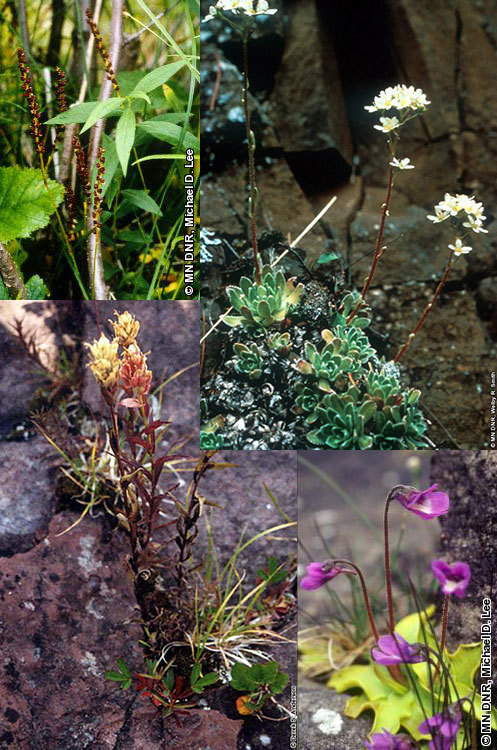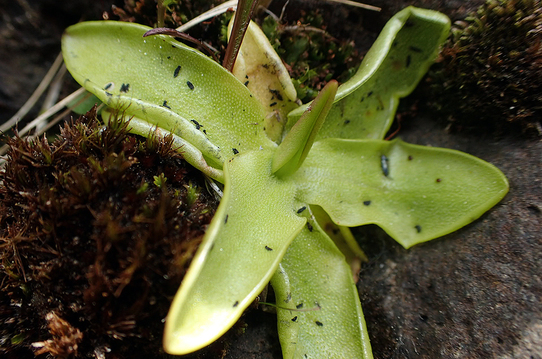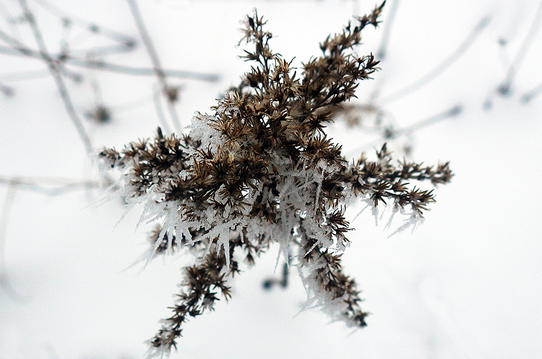Living Relicts – The North Shore’s Intriguing Disjunct Flora
First in a 50th anniversary story series highlighting natural features preserved on Minnesota Scientific and Natural Areas
Chel Anderson, Minnesota Biological Survey
The Minnesota North Shore’s rich history as a destination for scientific discovery and research has been in the making for at least 200 years. Sparking interest and enthusiasm from the beginning were plants belonging to an intriguing group of species called ‘arctic and alpine disjuncts’: a term referencing the geographical separation of the Minnesota plant populations from the main ranges of the species in arctic, subarctic and/or alpine regions. Since botanizing in the late nineteenth century provided the first tantalizing clues to the distinctive and rarified character of its flora, the bedrock shore and cliff communities of the Lake Superior shore have been identified as important refugia – think home away from home – for rare arctic and alpine disjunct plants. The presence of this suite of wildflowers, mosses and lichens – living ‘relicts’ of the past – testify to some of the most ancient events on Earth, as well as to the powerful and dynamic forces that continue to shape today's landscape.
The most recent glaciation periodically concealed the Arrowhead region beneath blankets of ice and snow one to two kilometers thick until about 12,000 years ago. A changing climate slowed then halted the advance of the ice, beginning a period of glacial stagnation and eventually retreat. Waning glacial lobes gradually left the land surface free of ice, depositing drift – glacier-manufactured rock fragments ranging in size from huge boulders to the finest “rock flour” – in their wake. Wherever drift covered the ice or the land surface became exposed, it was available for colonization by opportunistic plants, which could tolerate the harsh conditions.
Among the early inhabitants of this raw landscape were a variety of arctic, subarctic and alpine plants. These plants had evolved a thrifty, perennial growth which enabled them to live within the limiting conditions existing on and near the ice. The ‘welcome mat’ which greeted them in northeastern Minnesota, consisted of saturated soils with dramatic differences between surface temperatures and those of the root zone. Undaunted by this and the annual regimen of extreme cold, short, cold growing season with wild swings in daily temperatures, and cold, unobstructed wind, they were successful in the new terrain, slowly stabilizing the highly erodible drift with their roots and cover, and began improving the soil by adding organic material and nutrients.
The predominance of these pioneering species was quickly challenged. As the habitat conditions most favorable to their success shifted further north, so for the most part, did arctic and alpine species. But some stubbornly persisted in the remaining habitats least desirable to newcomers: peatlands, eroding cliffs and slopes, and in and around the cool pools and lakes that were abundant, including Lake Superior’s shore. Descendants of these earliest ‘locals’ are still present today as ‘relicts’ of the past, and some find themselves ‘disjunct’. Many are rare in Minnesota primarily because of the limited habitat now available.
 |
Clockwise from upper left: Alpine bistort (Bistorta vivipara), photo by Michael D. Lee, MN DNR; encrusted saxifrage, (Saxifraga paniculata), photo by Welby R. Smith, MN DNR; butterwort (Pinguicula vulgaris), photo by Michael D. Lee, MN DNR; northern paintbrush (Castilleja septentrionalis), photo by Derek S. Anderson, MN DNR.
The captivating and remarkable wildflowers persisting on the Shore draw on a wide repertoire of specific adaptations – small and often compact aerodynamic forms, fibrous roots, insectivory, multiple reproductive and dispersal options – to defy the ravages of waves and ice, living embedded in moist tundra-like vegetation mats or wedged into gnarly cracks and crevices on the Big Lake’s bedrock shore or towering cliffs. Rare wildflowers like encrusted saxifrage, (Saxifraga paniculata), hoary whitlow grass (Draba cana), butterwort (Pinguicula vulgaris), alpine bistort (Bistorta vivipara) and northern paintbrush (Castilleja septentrionalis) mingle with more common, but no less lovely relict companions such as bird’s-eye primrose (Primula mistassinica), three-toothed cinquefoil (Potentilla tridentata), Kalm’s lobelia (Lobelia kalmii), harebell (Campanula rotundifolia) and bristly hummocks of tufted bulrush (Trichophorum caespitosum).
Relict, disjunct plants and their habitat can be very vulnerable, particularly on the Lake Superior shore: where many miles of shoreline may provide only a small amount of suitable microhabitats with just the right combination of conditions. Both the plants and their microhabitats are quite fragile, easily damaged or destroyed unintentionally, even by recreational use.
Whether rare or common, stately white pine or spunky butterwort, native plant species and native plant communities are intrinsically valuable members of a vibrant multi-dimensional scale network of relationships and processes that sustains all of us. In northeastern Minnesota, people have benefited from their connections to plants and native plant communities here for thousands of years - a story still unfolding and involving people as increasingly prominent figures. As the story continues, our challenge is to live in a manner reflecting the elegant, integral and interdependent nature of this landscapes’ relationships, which science continues to help illuminate and Lake Superior shore SNAs like Sugarloaf Point, Iona’s Beach, Butterwort Cliffs contribute to conserving.
Site Highlight: Butterwort Cliffs SNA
By AmberBeth VanNingen, NE Region SNA Management Specialist
As we’ve moved into winter here in Minnesota, most of us likely know at least one person who is just a little too excited about this particular season. They seem to thrive in the harsh and unpredictable conditions this land is known for. Maybe you are that person. If so, take heart; you have comrades in the plant world who are right there with you.
The north shore of Lake Superior is home to several arctic-alpine disjuncts – plants that are usually found much further north or in high altitudes and as such disjunct, or separated, from their normal ranges. In their book North Shore, Chel Anderson and Adelheid Fischer describe these plants as "holdovers from glacial times” which are sometimes more than 600 miles away from their typical ranges. In the summer, Lake Superior acts as a cold air sink, keeping temperatures much cooler on the shore than in the nearby highlands. Fall and winter bring pounding wind and waves and then the formation of ice on the lake and adjoining shore. Disjunct plant species can be found clinging to the side of cliffs overlooking the lake or finding a footing in small crevices in the rocky shore where strong winds and ice rage and sunshine is limited. This is often the only places they are found in Minnesota.
 Lake Superior coast at Butterwort Cliffs Scientific and Natural Area. Photo by AmberBeth VanNingen
Butterwort Cliffs SNA provides habitat and protection for a few of these disjunct species, including its namesake. Butterwort (Pinguicula vulgaris), a small plant with purple flowers and deadly, bright green leaves. Butterwort is insectivorous, trapping small insects on its sticky leaves to supplement the meager supply of nutrients it gets from the shallow soil in the cracks and crevices it roots itself in. These sticky leaves have big pores and need to live in wet environments, like a cool lakeshore, to avoid drying out and dying. Because of its specific habitat needs, butterwort is listed as a special concern species in Minnesota. In fact, many disjuncts are listed species because of their restricted ranges around Lake Superior.
In addition to protecting habitat for disjunct plant species, Butterwort Cliffs SNA is home to known nesting sites for a number of bird species including bald eagles, herring gulls, and peregrine falcons. To protect the nesting habitat, the area around Ergo Bay in the western part of the site was designated a sanctuary, and is closed from April 1 to July 15.
Note: Butterwort Cliffs SNA is within Cascade River State Park. A state park permit is not required to enter the SNA. Parking is available across Hwy 61. Butterwort Cliffs has no maintained trails or facilities.
 Butterwort with insects trapped in its sticky leaves. Photo by AmberBeth VanNingen
Welcome Lindsay!
The Scientific and Natural Areas Program is excited to welcome Lindsay Bjorklund! Lindsay will be working as an SNA Interpretive Naturalist in northeastern Minnesota. A Minnesota native, Lindsay grew up outside of Red Wing and attended the University of Minnesota, Duluth where she earned a B.S. in Environmental Science.
 Lindsay Bjorklund. Photo courtesy Lindsay Bjorklund
Q1. How did you become interested in the outdoors and becoming a naturalist?
I grew up with a family that valued learning and time spent outside - summer trips were usually some combination of hikes, museum tours, and fishing outings. Throughout middle school and high school, I became increasingly involved with an environmental learning program in my hometown. I developed tons of new outdoor skills by going on outings and trips to all sorts of natural areas in Minnesota! I then studied environmental science in college and gained a more sound understanding of the natural processes that are so vital to the places I love. After graduating college, I taught environmental education in northern Minnesota for several years and discovered that I really enjoyed the challenge of engaging students in science and the outdoors.
Q2. What are you most excited for about being an Interpretative Naturalist with the SNA program?
I think being a naturalist is all about being a continuous learner - I am excited to learn as much as I can about the vast and unique SNAs in the region. I can’t wait get to know the folks that have so much knowledge and do so much to care for these natural areas. I’m just as eager to introduce the next generation of stewards, scientists, and explorers to places they’ve never visited before. I enjoy coming up with new and creative ways to share my ever-evolving knowledge with others and can’t wait to do it with the SNA program!
Q3. What is your favorite topic to interpret for visitors?
Lately, I have been delving into the small and often overlooked things. Natural curiosities such as an insect gall on a goldenrod stem or an unassuming fungus on a log can have surprisingly complex and fascinating stories!
Q4. What is your favorite way to spend time outdoors?
It’s hard to pick favorites, but I sure love winter activities! Between cross-country skiing, downhill skiing, skating, ice fishing, curling, snowshoeing, and sledding, there is so much fun to be had!
SNA Events
Events are a nearly a year-round affair at Lost Valley Prairie SNA! In winter months, the focus is on cutting and burning brush. Join in on one of these rewarding stewardship projects. A full list of events is available on the SNA Events Calendar.
 Winter at Lost Valley Prairie SNA. Photo by Carly Gelderman
Notes from Site Stewards
This fall we asked SNA site stewards to participate in a survey to provide feedback on what their experience has been like volunteering with the SNA Program. Here are a few stats and notes from the survey:
What are your most important motivations for continuing as a site steward? (check all that apply)
- Making a difference/working to enhance a natural area (79%)
- A personal connection to the site (64%)
- Learn more about nature (49%)
- Other (11%)
I am satisfied with my volunteer experience.
- Agree or Strongly Agree (87%)
- Neutral (11%)
- Disagree or Strongly Disagree (1%)
What about your volunteer experience do you like best?
- Spending time in the SNA is meditative. I enjoy watching the changes from season to season.
- Being involved in hopefully making a difference.
- Exploring an amazing piece of public land and seeing to its well-being.
- It is an opportunity to do something that benefits the natural environment.
- When we can do something constructive, e.g. invasive removal.
Thanks stewards for all the work you do for SNAs!
|